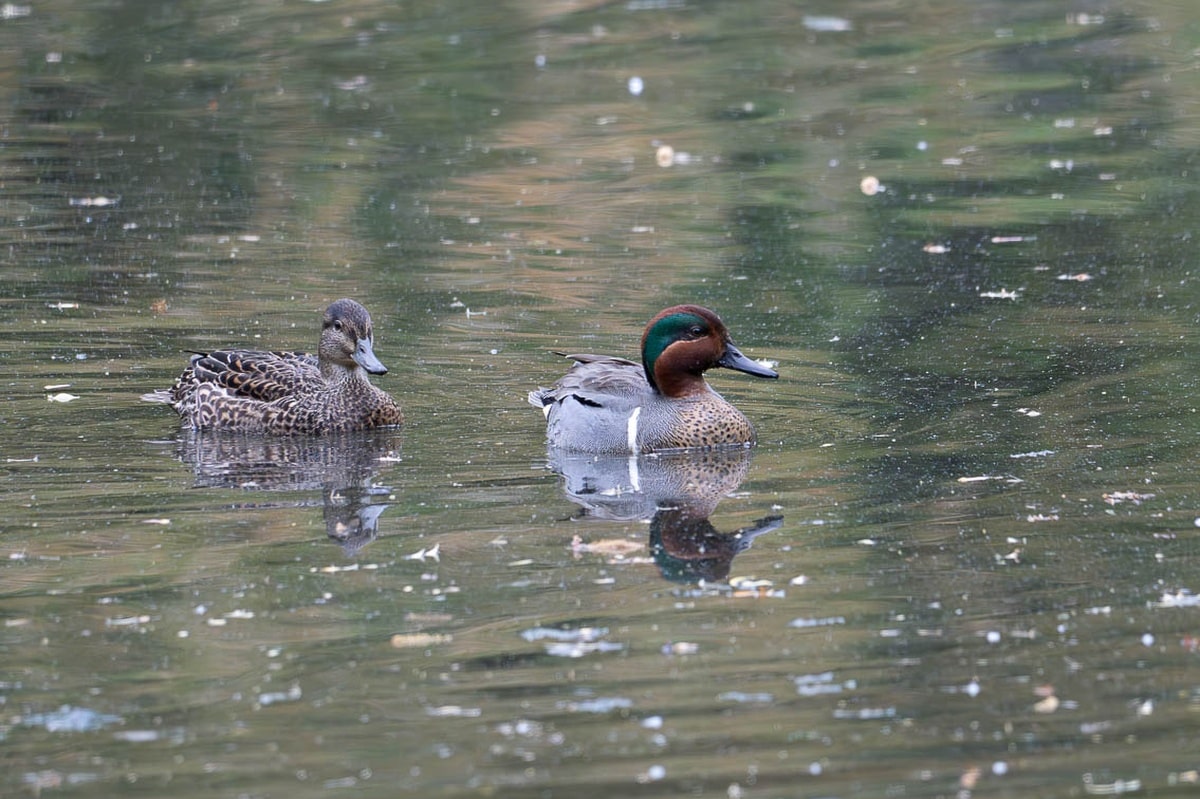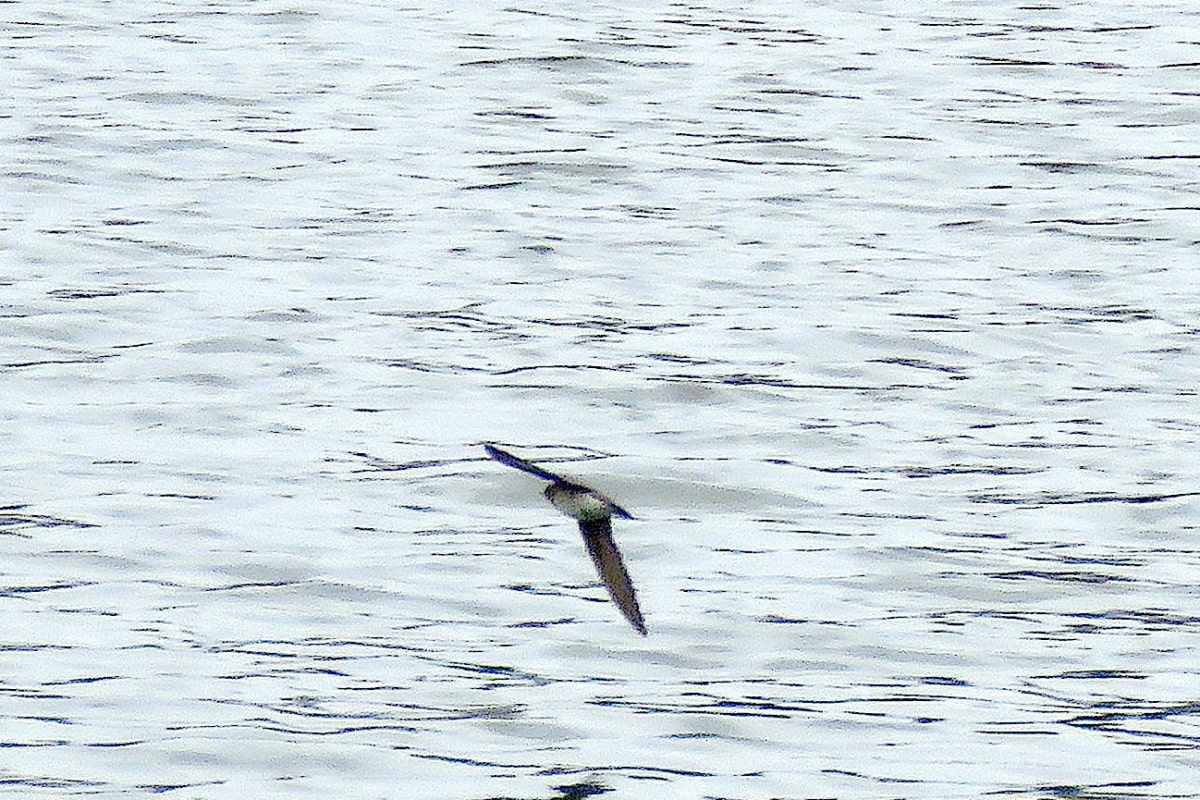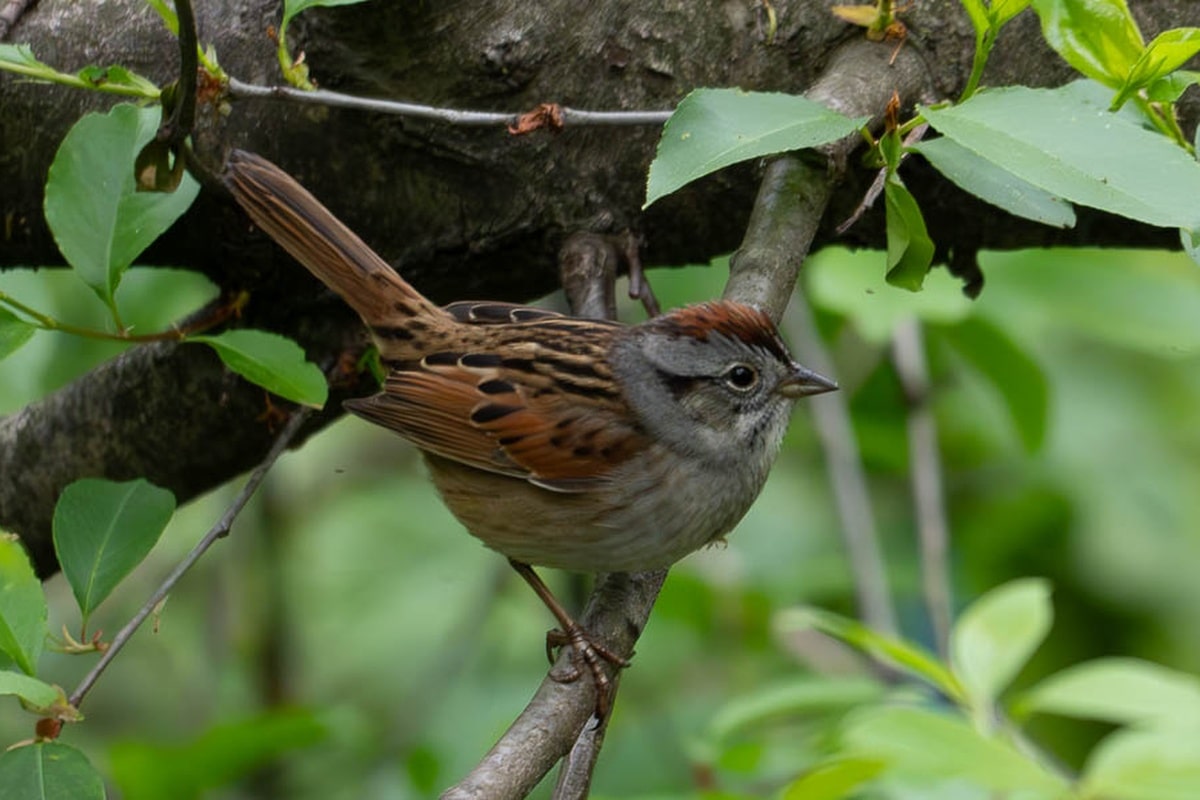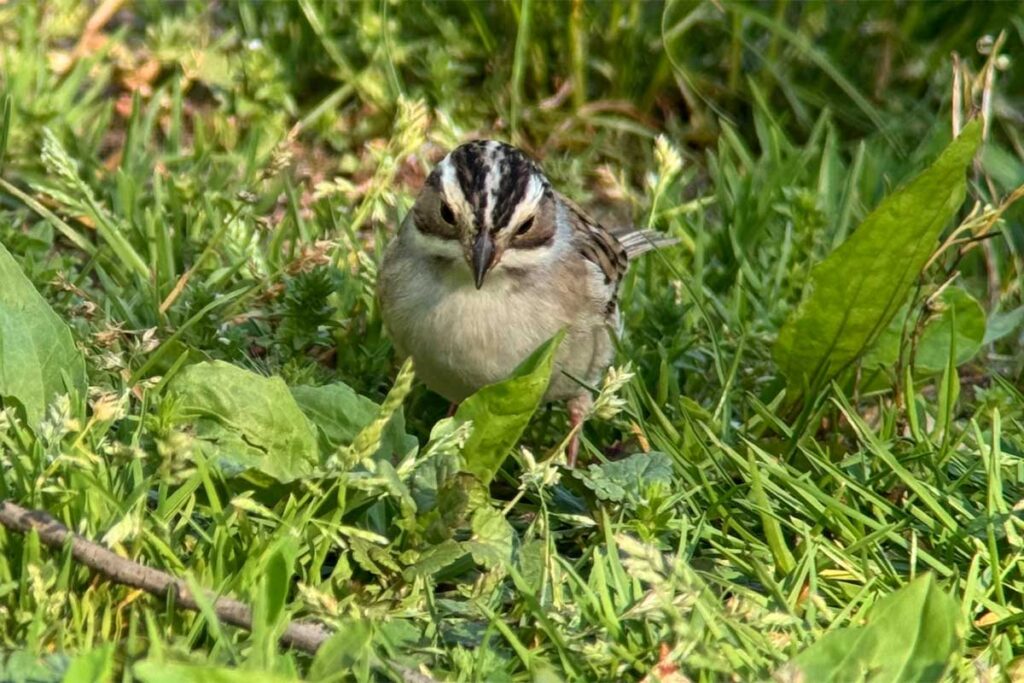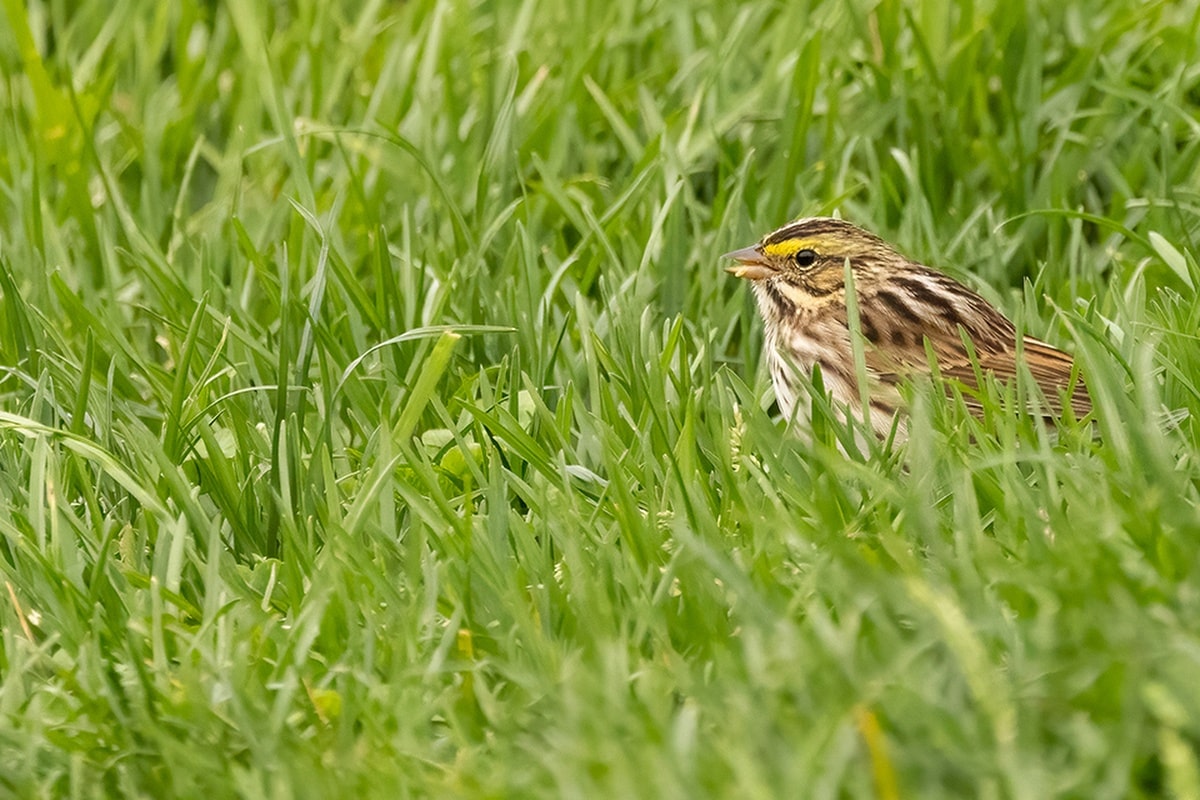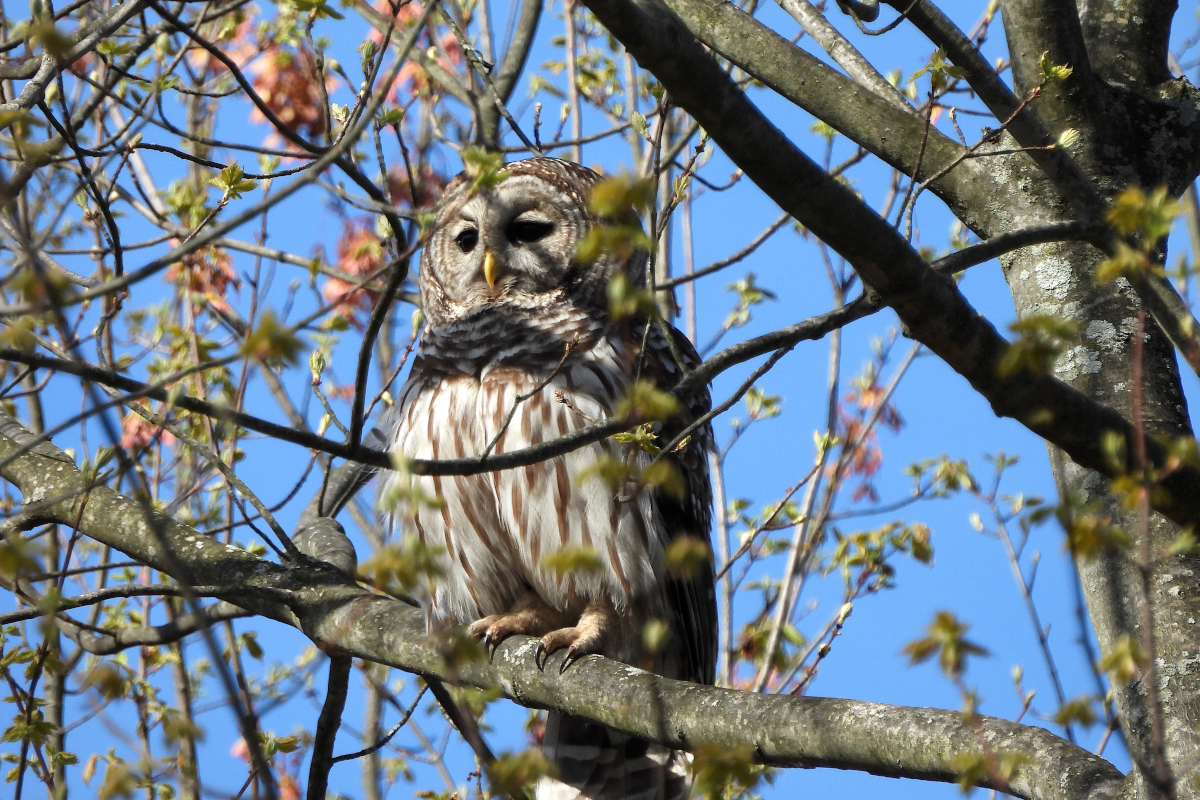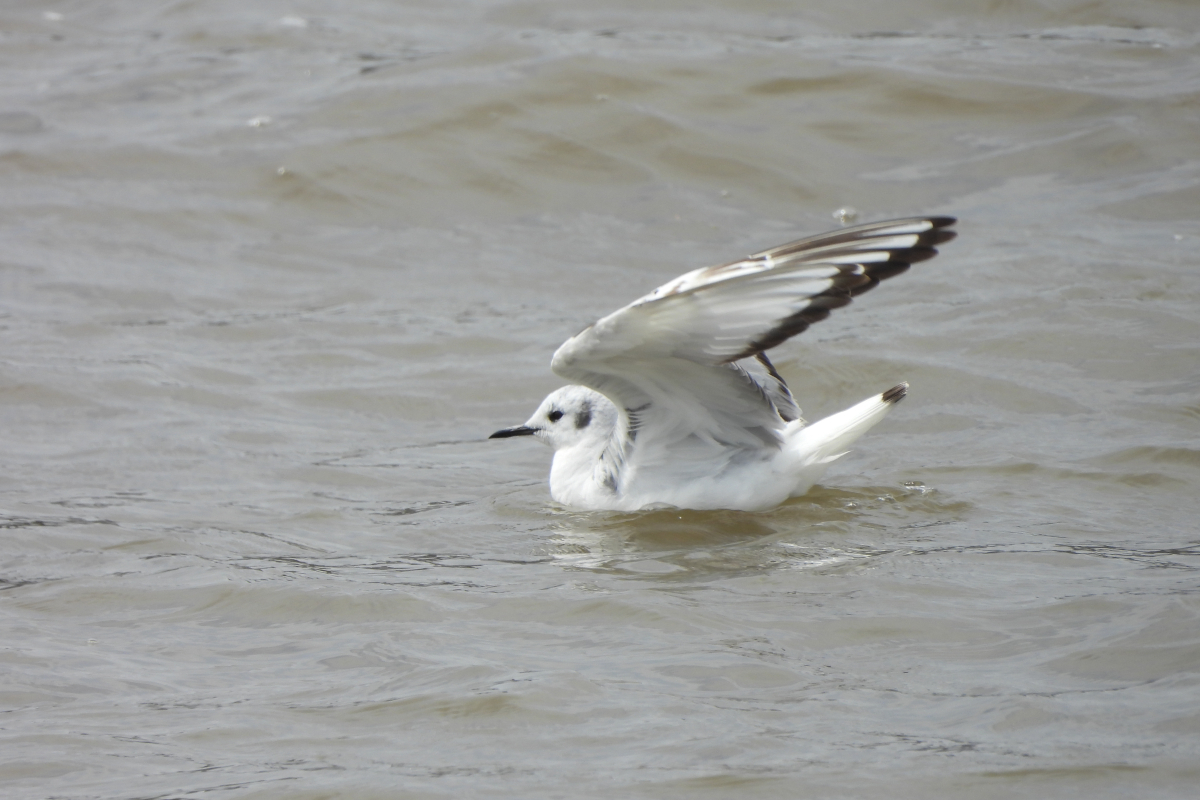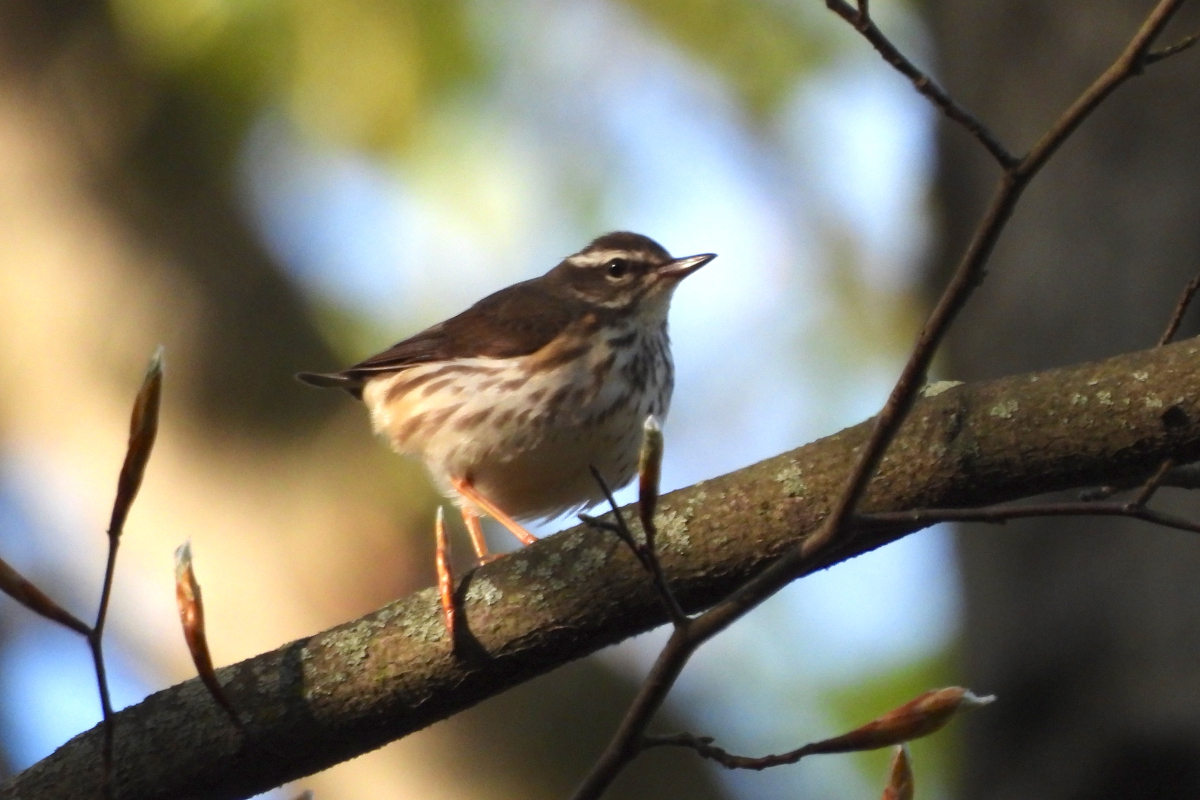Bashakill Marsh and Environ with John Haas, 5/8/2024
Registrar: Leslie Fiske
Participants: 11
Weather: Temperature mid-40s; light rain turning to heavy; wind speed 8 mph ESE
Bird Species: 60
A small, determined group of participants braved the rain and cool spring temperatures for a remarkable morning of birding with Bashakill’s expert, John Haas, who, throughout the walk, regaled us with tales of the history and environment of Basha Kill and the surrounding areas.
We began at the Duck Blind and were treated to the sounds of the marsh and the sight of a Belted Kingfisher traversing the area. At the Haven Road Bridge, we got great views of Eastern Kingbirds and multiple swallow species, including Bank, Tree, Northern Rough-winged, and Barn. Continuing on the Stop Sign Trail, we heard and saw 11 warbler species and 2 vireo species. We then visited the Mamakating Environmental Education Center, where we spoke with staff, gathered educational materials, and even viewed a hedgehog. Our last stop was along the Horseshoe Trail, where we were fortunate to see a male Cerulean warbler. By then, the rain had become a downpour, and we felt chilled. Our excursion with John ended, though some participants continued to Deli Field Road on their own.
Species Lists
Birds
Canada Goose
Wood Duck
Mallard
Virginia Rail
Common Gallinule
Solitary Sandpiper
Lesser Yellowlegs
Greater Yellowlegs
Great Egret
Great Blue Heron
Bald Eagle
Belted Kingfisher
Red-bellied Woodpecker
Downy Woodpecker
Pileated Woodpecker
Northern Flicker
Least Flycatcher
Eastern Phoebe
Great Crested Flycatcher
Eastern Kingbird
Yellow-throated Vireo
Warbling Vireo
Blue Jay
American Crow
Black-capped Chickadee
Tufted Titmouse
Bank Swallow
Tree Swallow
Northern Rough-winged Swallow
Barn Swallow
Ruby-crowned Kinglet
White-breasted Nuthatch
Blue-gray Gnatcatcher
Carolina Wren
Gray Catbird
Veery
Swainson’s Thrush
American Robin
White-throated Sparrow
American Goldfinch
Song Sparrow
Swamp Sparrow
Baltimore Oriole
Red-winged Blackbird
Brown-headed Cowbird
Common Grackle
Ovenbird
Northern Waterthrush
Black-and-white Warbler
Common Yellowthroat
American Redstart
Cape May Warbler
Cerulean Warbler
Northern Parula
Yellow Warbler
Black-throated Blue Warbler
Pine Warbler
Yellow-rumped Warbler
Black-throated Green Warbler
Northern Cardinal





